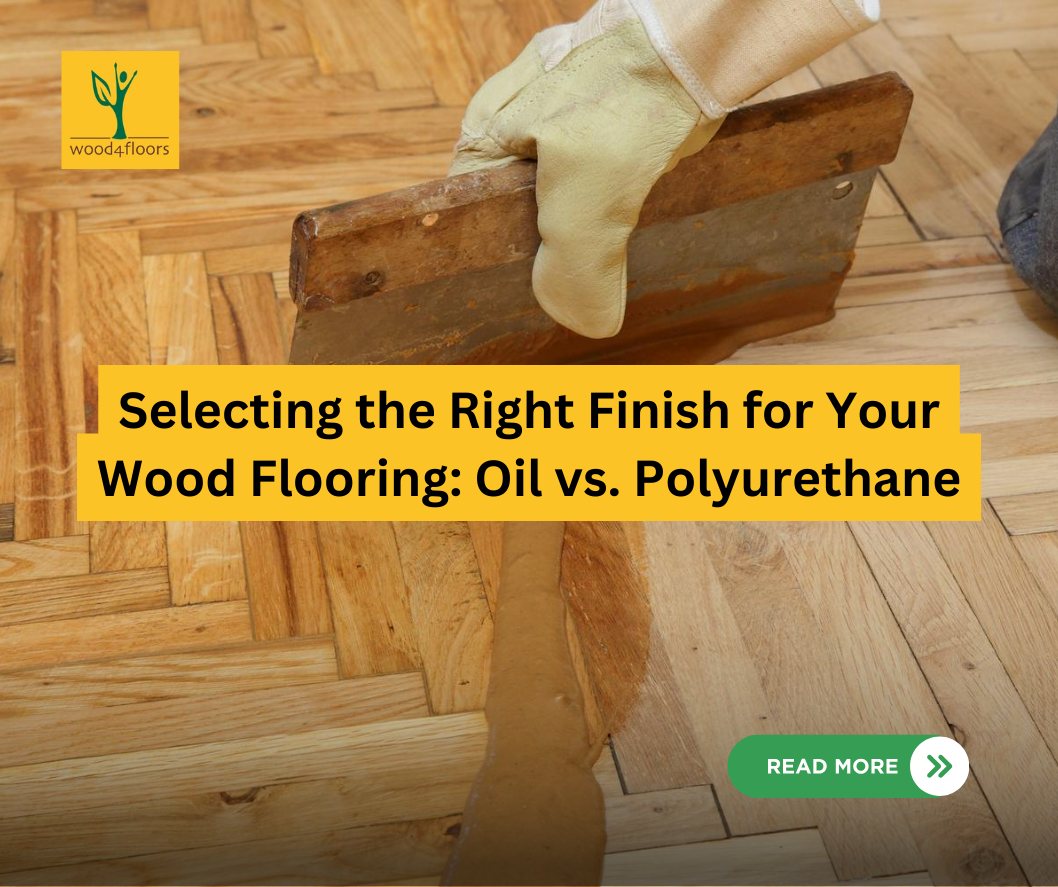When it comes to wood flooring, the finishing touch can make all the difference. The choice between oil and polyurethane finishes is a crucial decision that influences not only the aesthetics but also the maintenance and durability of your floors. In this guide, we’ll break down the characteristics of both finishes, helping you make an informed decision for your space.
- The Timeless Appeal of Oil Finishes: Oil finishes have been favored for centuries, and for good reason. These finishes penetrate the wood, enhancing its natural beauty by bringing out the richness of the grains. The result is a warm and matte appearance that exudes a timeless charm. Oil finishes are excellent for those who appreciate a more natural and rustic aesthetic.
- Polyurethane: The Shield of Durability: Polyurethane finishes, on the other hand, create a protective layer on the surface of the wood. This layer acts as a shield against scratches, stains, and moisture, making polyurethane an ideal choice for high-traffic areas. The glossy or satin finish adds a touch of elegance, and the durability of polyurethane makes it a low-maintenance option.
- Balancing Act: The Aesthetic vs. Practicality Dilemma: The choice between oil and polyurethane often boils down to the balance between aesthetics and practicality. If you prioritize a natural, matte appearance and are willing to embrace the occasional maintenance task, an oil finish may be your go-to. However, if durability and easy maintenance take precedence, polyurethane might be the winning choice.
- Maintenance Matters: The Oil Finish Commitment: Oil-finished wood floors require more frequent maintenance compared to polyurethane. Regular reapplication of oil is necessary to maintain the protective layer and prevent wear and tear. While this may seem like a drawback, some homeowners appreciate the patina that develops over time, adding character to the wood.
- Repairing and Refinishing: The Oil Advantage: One notable advantage of oil finishes is their ease of repair. If scratches or dents occur, spot repairs are often feasible without requiring a full refinishing. This can be a cost-effective and convenient solution for homeowners who want to address minor imperfections without a major overhaul.
- Polyurethane: The Sand and Refinish Approach: Polyurethane finishes, while durable, may require a more involved process for repairs. If significant damage occurs, sanding and refinishing the entire floor may be necessary. This process can be more time-consuming and may incur additional costs, but it restores the floor to its original splendor.
- Personalizing Your Choice: The Final Verdict: In the end, the right finish for your wood flooring depends on your personal preferences and lifestyle. If you adore the natural, matte look and are committed to regular maintenance, an oil finish might be the perfect fit. For those seeking a balance between elegance and durability with minimal upkeep, polyurethane emerges as the practical choice.
Conclusion: Choosing between oil and polyurethane finishes for your wood flooring is a decision that balances aesthetics and practicality. Whether you opt for the timeless warmth of an oil finish or the protective shield of polyurethane, understanding the characteristics of each allows you to make an informed decision that aligns with your style and maintenance preferences. Sealing the deal on your wood flooring has never been more exciting!


